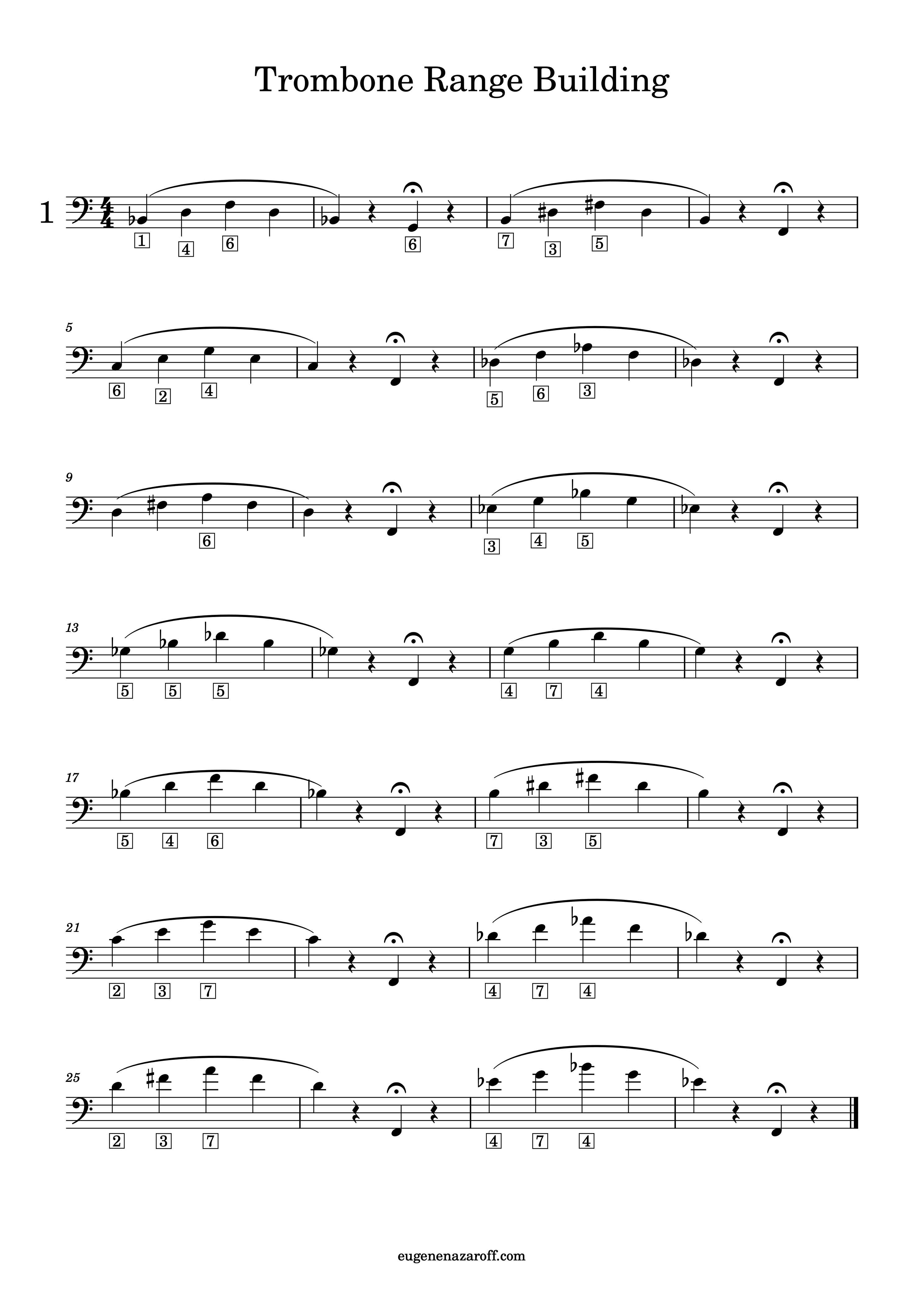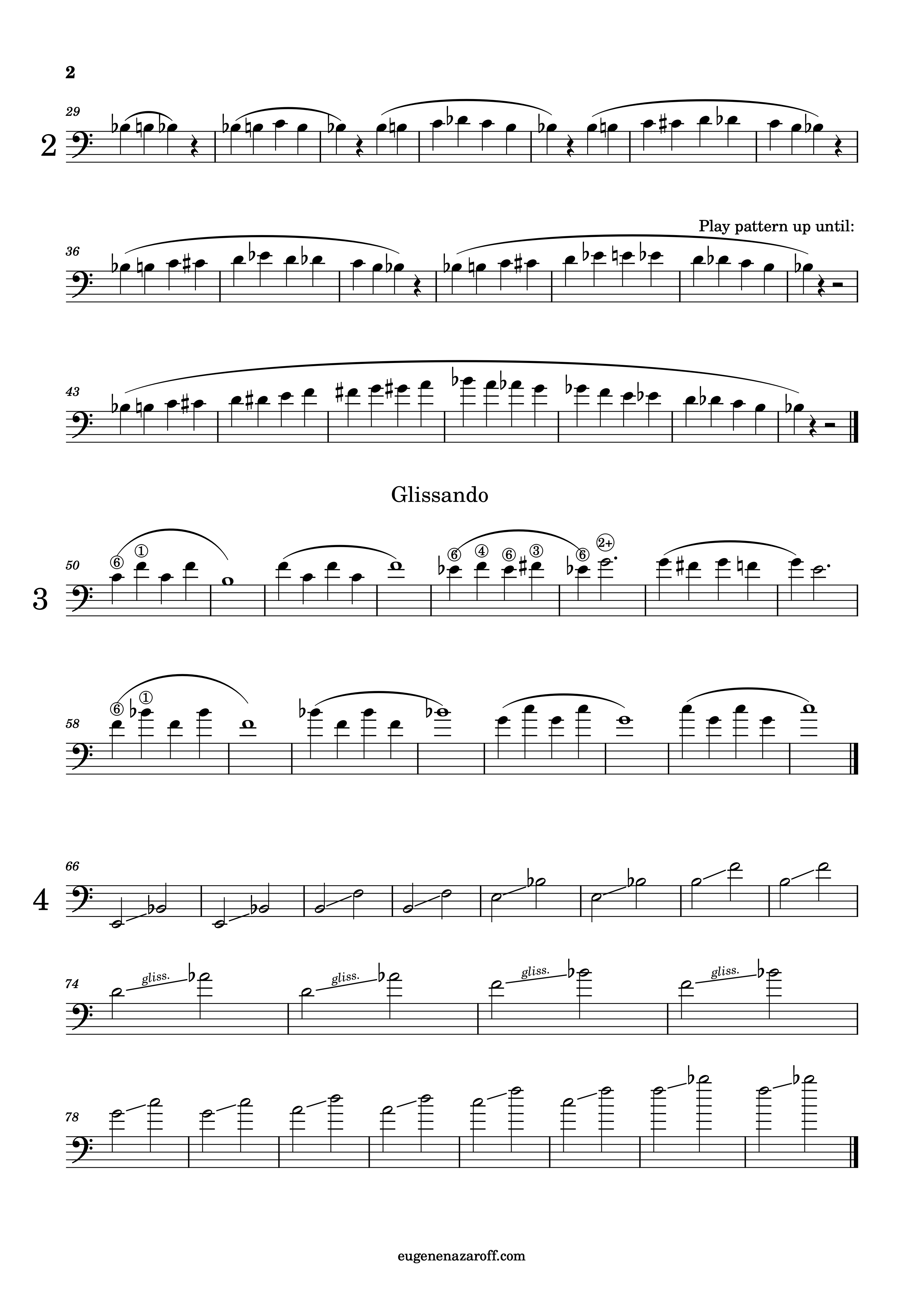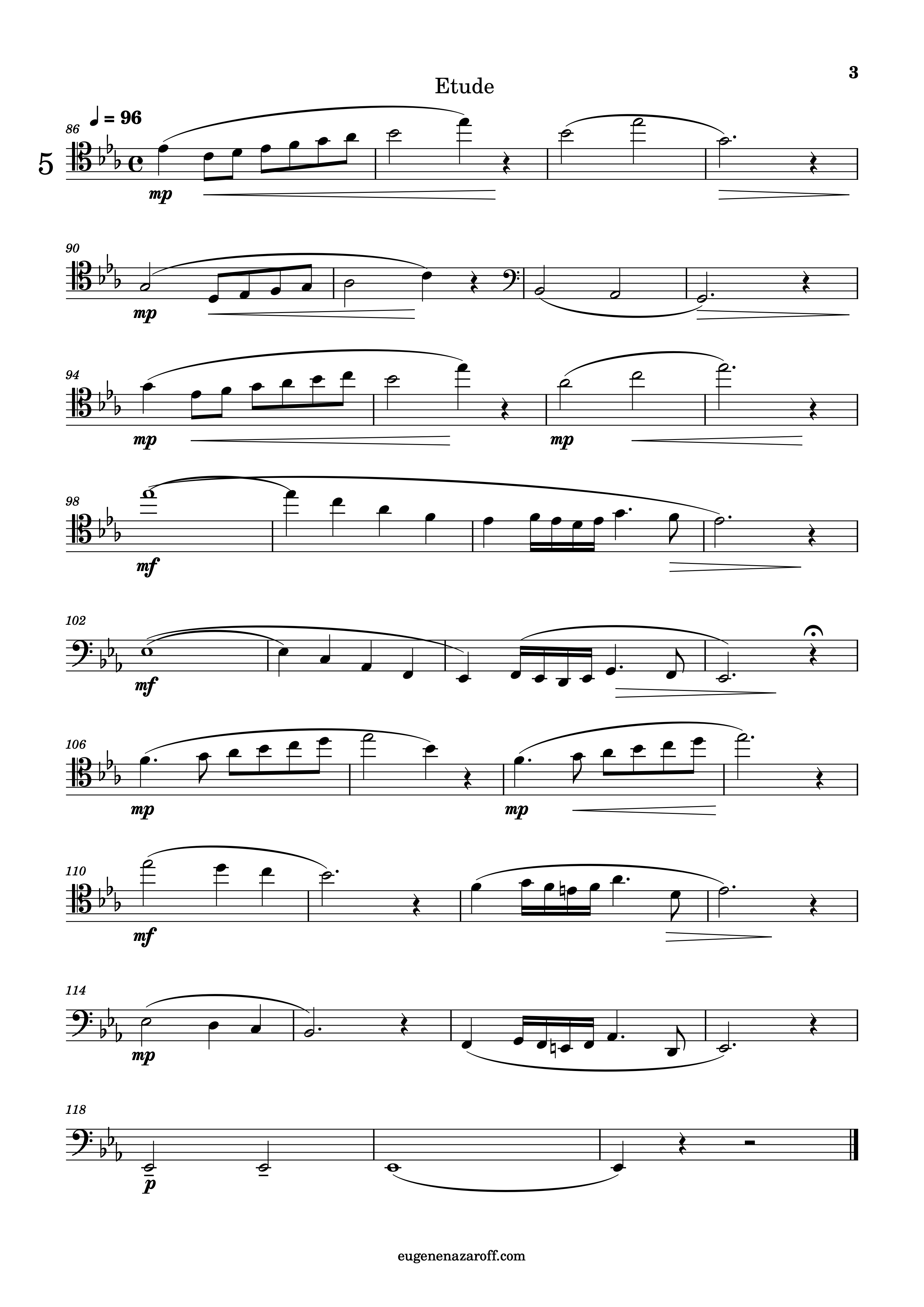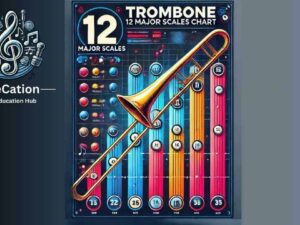5 Trombone Range Building Exercises For Beginners: Master Full Potential
Original price was: $0.65.$0.00Current price is: $0.00.
Description
Trombone Range Building is a crucial exercise for trombonists of all levels. It helps expand your playing range, improve tone quality, and boost overall technical proficiency. This comprehensive guide will walk you through the exercise, provide expert tips, and explain how it benefits your trombone playing.
Trombone Range Building is a set of exercises designed to extend a player’s comfortable playing range. It’s essential for developing embouchure strength, breath control, and slide technique. This exercise suite suits intermediate to advanced players looking to push their boundaries and achieve a fuller, richer sound across the trombone’s entire range.
As my old friend (a trombonist) used to say, “A trombonist with a wide range is like a painter with a full palette of colors.” (Trust me, it sounds better in Russian!)
MusicSheetViewerPlugin 4.1Trombone Range Building Exercises — Sheet Music Overview
The Trombone Range Building exercise consists of five distinct sections:
- Two basic exercises
- Two glissando exercises
- One etude
The exercise begins in 4/4 time and features a mix of quarter notes, eighth notes, and longer held notes. It progresses through various patterns, incorporating both stepwise motion and larger intervals. The glissando sections are particularly noteworthy, as they challenge players to maintain smooth transitions across a wide range.
**Key points to note:**
- Time signature: 4/4
- Key: Varies throughout the exercise
- Range: Covers a wide span of the trombone’s register
- Special techniques: Glissando, sustained notes
Trombone Range Building — Step-by-Step Breakdown of the Exercise
- **Basic Exercises (Measures 1-28)**
- Start with simple patterns focusing on slide positions and intonation
- Pay attention to the numbered positions indicated below the notes
- Maintain a steady tempo and focus on clean articulation
- **Glissando Exercises (Measures 29-58)**
- Practice smooth transitions between notes
- Don’t push beyond your comfortable range – it’ll improve with time
- Keep your embouchure still but focused
- Prioritize consistent airflow over strength
- Play as slowly as necessary for control
- **Etude (Measures 86-118)**
- Combines techniques from previous sections
- Focus on musicality and phrasing
- Pay attention to dynamic markings (mp, mf, p)
**Pro Tip:** When practicing glissandi, imagine you’re “sliding” on a smooth surface with your sound. It should feel effortless, not forced.
Trombone Range Building — Technical Detail and Musical Analysis
The Trombone Range Building exercise incorporates several key musical concepts:
- **Intervallic training:** The exercise includes both stepwise motion and larger leaps, improving your ability to navigate the instrument’s range accurately.
- **Articulation variety:** From legato glissandi to more defined articulations, this exercise develops your tonguing and slide technique.
- **Dynamic control:** The etude section introduces dynamic changes, challenging you to maintain consistent tone quality at different volumes.
- **Breath support:** Long phrases and sustained notes in the glissando sections build lung capacity and breath control.
- **Slide technique:** Rapid position changes in the basic exercises improve slide accuracy and speed.
The exercise’s structure progressively builds complexity, allowing you to focus on individual skills before combining them in the final etude.
Trombone Range Building — Common Challenges and How to Overcome Them
- **Maintaining consistent tone across registers**
- Solution: Practice long tones in different registers, focusing on a full, centered sound
- Tip: Record yourself and listen critically to identify weak spots
- **Smooth glissandi**
- Solution: Start slowly, ensuring even air support throughout the slide
- Tip: Visualize the slide motion as a continuous, fluid movement
- **Endurance issues**
- Solution: Build up practice time gradually, taking frequent breaks
- Tip: Incorporate breathing exercises into your daily routine
- **Intonation in extreme registers**
- Solution: Use a tuner to check pitch accuracy, especially in high and low ranges
- Tip: Practice with drones to develop your ear for proper intonation
- **Coordinating slide and tongue for fast passages**
- Solution: Practice slow, deliberate movements, gradually increasing speed
- Tip: Use a metronome to ensure steady tempo and precise coordination
Trombone Range Building — Tips for Effective Practice
- Start each practice session with a proper warm-up
- Use a mirror to check your embouchure and posture
- Practice in short, focused sessions rather than marathon practices
- Record yourself regularly to track progress
- Alternate between slow, methodical practice and playing at tempo
- DON’T neglect the middle register while working on range
- Stay relaxed — tension is the enemy of good tone
**Remember:** As they say in Russia, “Терпение и труд все перетрут” (Patience and hard work will grind everything down). Consistent practice is KEY!
Trombone Range Building — How This Exercise Benefits Overall Trombone Playing
Mastering the Trombone Range Building exercise translates directly to improved overall playing:
- **Increased flexibility:** Smoothly transitioning between registers becomes second nature.
- **Better tone quality:** Consistent practice leads to a more resonant, full-bodied sound across all registers.
- **Improved endurance:** Building strength in your embouchure and breath support allows for longer playing sessions.
- **Enhanced musicality:** The etude section develops phrasing and expression.
- **Versatility:** A wider range opens up more repertoire possibilities across various genres.
As jazz trombonist J.J. Johnson once said, “Range is a by-product of other things. If you try to build range (as a goal) you won’t get it.” This exercise helps you build range organically through comprehensive skill development.

Trombone Range Building — Related Exercises and Next Steps
To complement your Trombone Range Building practice, consider these exercises:
- “ Long tone” exercises to improve breath control for beginner and intermediate players
- Trombone Scale Chart in PDF — patterns to enhance finger dexterity and slide technique
- “Trombone Lip Slurs” — 2-page beginner essential warm-ups
- “9 Trombone Articulation Exercises” — the “secret” weapon for trombone players
- “8 Trombone Tonguing Exercises” — a fundamental technique you NEED to master
- “5 Beginner Trombone Flexibility Exercises” — Master trombone slur notes without slide
For beginners, start with simple long tones and lip slurs before tackling this range building exercise. Advanced players can explore more complex etudes that incorporate wide leaps and challenging articulations.
Remember, consistent practice is key to improvement. As we say in the music world, “The ONLY bad practice session is the one that didn’t happen!!”
Additional information
| Instrument | Trombone |
|---|---|
| Level | Beginner, Intermediate |
| Type | Sheet Music |










Reviews
There are no reviews yet.